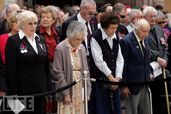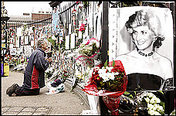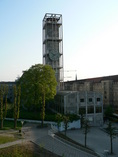Celebrating Sacred Time
Even in our contemporary secularised society, the principle of some kind of solidarity of spirit expressed by observing a common moment of time is coming to be seen as the 'minute of silence' in response to a national or international tragedy, where people are united nation-wide or even world-wide by a common public pause in their daily routine as a way of showing respect and sympathy for victims and mourners. People of faith and those with no religious belief participate in this 'secular liturgy of time' - showing how deep within the human psyche this belief is - whether organised nationally or internationally, or completely spontaneous as in ...
In the Remembrance Day ceremonies we probably have the most highly ritualised expression of all of this deep seated belief in the sacredness of time. At the eleventh hour of the eleventh day of the eleventh month the whole nation - and much of the world - pauses in its daily affairs and gathers either in fact or in intention to participate in this ceremony which remains unchanging from one year to the next. In this supreme example of the ritualization of sacred time, the world expresses its emotions for those who have given their lives.
This is the City Hall at Aarhus, Jylland, Denmark; designed by renowned architect Arne Jacobsen. The huge clock face (seven metres across) illustrates the concept of civic time: time is a social reality; the inhabitants of a town must all celebrate time together and by doing this, they express that togetherness.
All the above are examples of secular rituals connected with time in our world today; human beings are ritual animals for whom the celebration of time is vitally important




